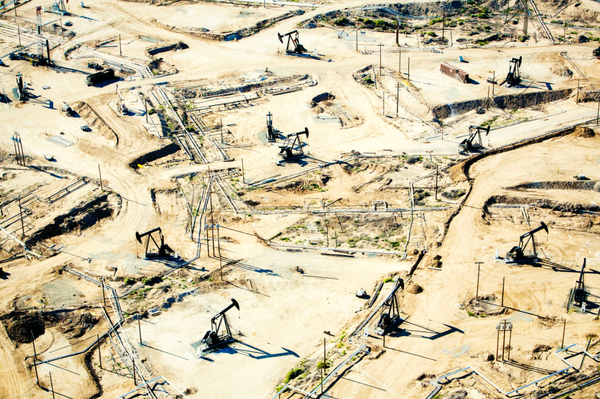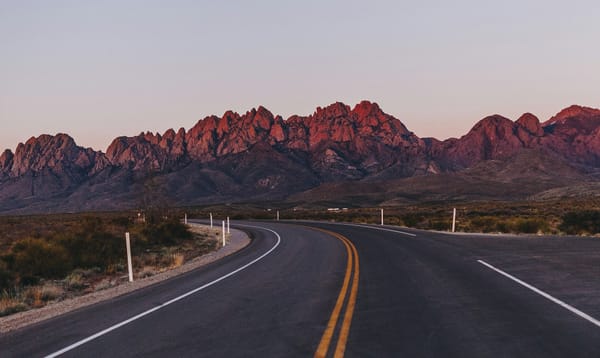The Dying Embers
Why are we opening up more public lands to coal mining at the expense of the booming recreation economy?
Last spring, when I was still noodling on the idea for a newsroom focused exclusively on public lands coverage, I started reaching out to people who work on policy issues in Washington, D.C. My sense, which I have been repeating ad nauseam in various media appearances over the last several weeks, is that we don't have enough journalists covering the public lands arena—full stop. I wanted to know if that theory of the case was shared by people in the conservation world who work to shape policy around the issues we planned to cover at RE:PUBLIC.
Overwhelmingly, I was met with affirmative responses which I jotted down in my notebook:
- "We need something like you're describing so badly right now."
- "Absolutely. We are all craving access to more reliable information."
- "Yes! Our members need to be better informed if we want to protect these places."
But now that we're nearly 48 hours into a government shutdown that could have dire consequences for public lands—and National Parks in particular—one endorsement I heard for the idea of RE:PUBLIC feels particularly resonant: "Public lands literacy on the Hill is at an all time low right now."
This was said by someone who works in a government affairs role at a conservation group, one that requires him to make regular visits to the halls of Congress. His point was that most of the elected representatives are unaware of how much land use has changed in the last 50 years. Despite the enormous growth of the outdoor recreation industry, the establishment of outdoor recreation offices in 24 states, and the nearly half a billion dollars generated each year from National Park visits alone, many elected officials still view resource and energy extraction as the most powerful economic driver that public lands—America's balance sheet—can provide.
That point was driven home by two key policy announcements made this week. On September 29, the day before the latest government shutdown commenced, the Trump administration announced it would be spending $625 million to reinvest in coal production and coal plants, as well as opening up some 13 million acres of public land for mining leases. On October 1, the day after the shutdown became official, the Department of Interior announced that, while roughly 9,300 National Park Service employees would be furloughed, affecting our ability to keep parks open, oil, gas, and mining lease opportunities would continue with all deliberate speed.
Specifically, the emphasis on new coal leases is the most alarming and confusing part of that statement. Many of the areas where these new leases or the expansion of existing mines are being considered—the Powder River Basin straddling Montana and Wyoming; Big Horn County in Montana; and Emery County in Utah, among others—are adjacent to or occupy lands already used heavily for ranching, hunting, fishing, and hiking. Whatever economic gains we might see from future fuel extraction will harm the thriving recreation economy in those same areas. Recreation is part of the future. Betting on coal right now is like betting on a Blockbuster in the age of the streaming wars.
And yet here we are, watching some leaders in Washington suddenly insist that coal is the answer to our energy future and reviving rural jobs. According to Energy Secretary Chris Wright, the recent decline of coal was simply a matter of snobby urban liberals hating rural economics: "[Coal] was out of fashion with the chardonnay set in San Francisco; Boulder, Colorado; and New York City," he told Fox Business on Monday, "but it's critical to America's industrial might."
It's true that coal has become "out of fashion." According to the U.S. Energy Information Administration (EIA), a federal agency that collects, analyzes, and publishes comprehensive energy statistics, U.S. coal use peaked back in 2007, when the fuel generated about half of U.S. electricity. By 2023, coal provided only about 16 percent.
But coal’s decline in the U.S. isn’t really about environmental rules or climate change policy or snobby coastal elites. The big downward drivers are market forces: cheap natural gas, plunging renewable costs, and aging coal plants. Even if you think climate change is a hoax—and plenty of folks still do—leaning into coal is bad policy. In fact, one can make an air-tight case against coal investment without uttering the words "carbon emissions." To wit:
- Most coal plants in this country are old, expensive to run, and unreliable when you need them most. Utility companies have been phasing them out not because they’re woke, but because the math doesn’t pencil out. Building new coal plants costs more than putting up wind turbines or solar panels, and those renewables don’t come with the same fuel and maintenance headaches.
- Investing in coal doesn't create more jobs. Coal jobs peaked generations ago. Mechanization wiped out far more mining positions than regulation ever did. Meanwhile, clean energy is one of the fastest-growing job markets in the country.
- When coal mines expand onto public lands, they don’t just scar landscapes. They push out other uses that rural communities increasingly rely on. A mine near a hunting unit disrupts wildlife habitat. A new rail spur cuts off access to a trailhead. Increased truck traffic clogs the same highways families use to reach campgrounds. All of this means that recreation suffers, and so does the small-business economy tied to it.
- If we double down on coal, we’re not just gambling on a dying industry—we’re handing the industries of the future to our competitors. While we argue about coal, China and Europe are racing ahead with solar panels, wind technology, and battery innovation. They see where the money is headed.
- Even with the financial support the administration is offering to prop up the coal industry and refurbish older plants, some energy analysts predict that coal demand will still continue to decline as soon as 2027.
Coal built towns and fueled a century of growth, but nostalgia is not a strategy. We have a thriving outdoor recreation economy that is already growing faster than coal can in this era. Nationwide, it’s worth more than $1 trillion annually and supports over five million jobs. Those aren’t just urban numbers either. Small towns across the West depend on tourists who come to float rivers, climb cliffs, or hike national forest trails.
If you care about the preservation of public lands, the stakes involved with this wonky policy discussion really hit home when you examine some of the other recent policy decisions coming out of Washington in the wake of the shutdown. At the same time the Department of Interior plans to move full steam ahead with plans for new coal leases, they're furloughing National Park Service staff. Parks will remain open with skeleton crews, but with so much uncertainty, thousands of visitors will now cancel their trips. By some estimates, gateway communities outside these parks stand to lose $30 to $40 million dollars a day as a result.
We need energy and we need jobs to keep America's economy humming. But the emphasis on coal to prop up rural economies is another example of our leaders in Washington failing to understand—or even recognize—the power of public lands to be a longterm, sustainable economic engine through outdoor recreation.
IN THE MEDIA
Speaking of people in D.C. that I called when I was still noodling on the idea for RE:PUBLIC, Anders Reynolds of the Southern Environmental Law Center was one of the first people I talked to. I'm still grateful he didn't tell me I was crazy. Around the time we first connected, he and his longtime pal, Bill Hodge, had just founded the excellent Wild Idea podcast, which explores all things public lands. In late September, I had the chance to record an episode with them in person—one of my favorite conversations to date.
STORY UPDATE
A few weeks ago I wrote about the Roadless Rule, a Clinton-era policy that bars additional road development on 58 million acres of remote national forests. That rule was shaped by a record 1.6 million Americans who weighed in during the public comment period back in 2000—over 90 of them endorsing the new rule. Last summer, the USDA announced it's intention to rescind the rule, triggering another public comment period, which ended last month. According to an analysis by the Center for Western Priorities, 99 percent of the more than "183,000 comments submitted to regulations.gov as of [September 19] oppose the Trump administration’s plan to repeal the rule."
The Good, the Bad, and the Ugly: Shutdown Edition

The Good [Editor's Note: Tough to find this week!]: Fundraising groups step up to help reopen national park sites and welcome visitors "When the government shut down in 2018, a Mississippi nonprofit interceded to fund a bare-bones crew to keep one of the state’s most-visited cultural attractions operating. Now, the group is committed to doing that for Vicksburg National Military Park once again."
The Bad: National Park Service Contingency Plan "Parks must develop daily cost estimates for all employees and services to be supported by recreation fees for review and approval by the Assistant Secretary for Fish and Wildlife and Parks. This may include costs that parks planned to fund out of appropriations that have lapsed. Where excepted activities as described above are appropriate under FLREA at these parks, they may also be proposed for FLREA funding."
The Ugly: Environmental review bill would sharply restrict public challenges to federal projects "The bill comes after earlier changes under the Trump administration to significantly weaken the Council on Environmental Quality, which used to oversee how federal agencies implement NEPA. Because of those changes, agencies from the Department of Defense to the Bureau of Reclamation were empowered to individually alter their internal rules for environmental permitting without any public input. Legal experts have warned that these systemic policy shifts could weaken oversight. Deborah Sivas, professor at Stanford University Law School and the Doerr School of Sustainability, said the changes were alarming. 'It gives a lot of power and discretion to the agencies, with very little public oversight or accountability,' Sivas said."




